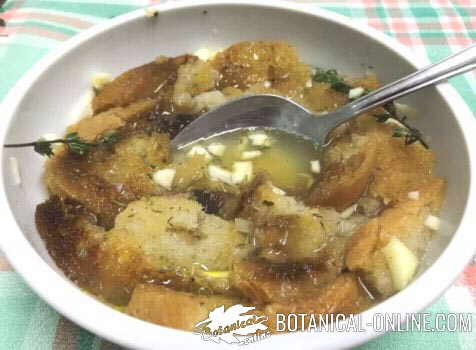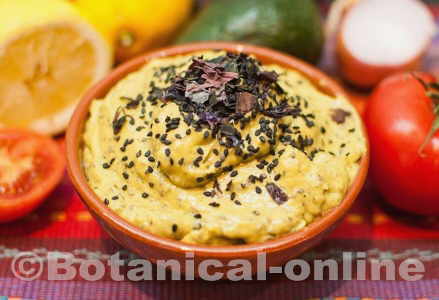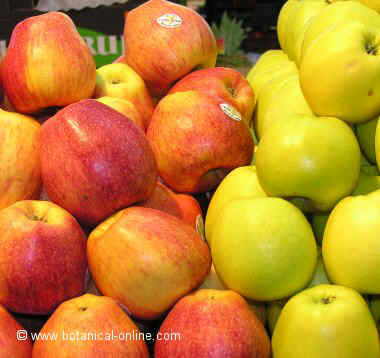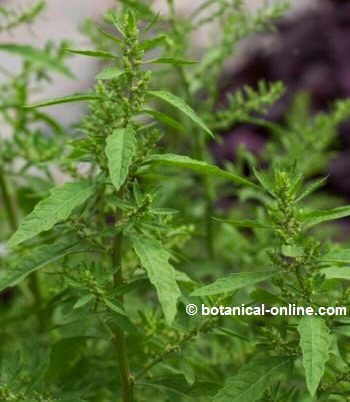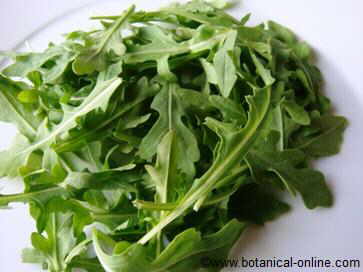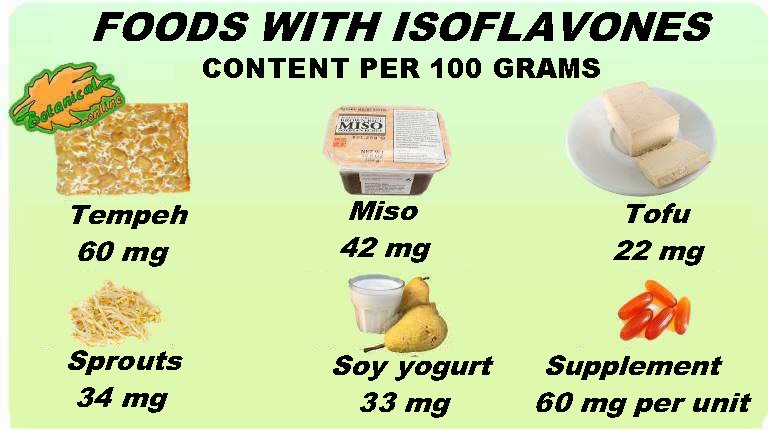Contents
- 1 Antinutrients of cereals, legumes and seeds
- 1.1 What are antinutrients?
- 1.2 What role do antinutrients have in plants?
- 1.3 Health effects of antinutrients: Are they toxic?
- 1.4 What is the importance of knowing food antinutrients?
- 1.5 Properties of antinutrients
- 1.6 What effect do antinutrients have?
- 1.7 What foods have antinutrients?
- 1.8 All foods have the same antinutrients?
- 1.9 Are there any tables of antinutrient content?
Antinutrients of cereals, legumes and seeds
What are antinutrients?
Antinutrients are naturally occurring components in foods that decrease their nutritional value, either because they form complexes with nutrients and prevent their absorption, or because they inactivate the enzymes responsible for digesting food. They can affect the assimilation of nutrients such as proteins, carbohydrates, vitamins or minerals.
What role do antinutrients have in plants?
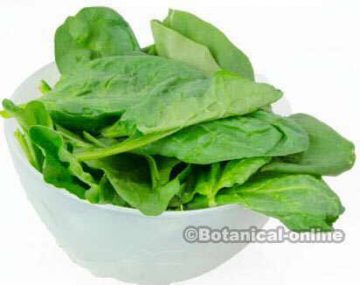
These substances are produced by plants as a defense or competition mechanism against other species, to ensure the survival of the plant or its seeds.
Therefore, they are found mainly in vegetables, such as beans, oats, walnuts, almonds, sunflower seeds, sesame, spinach, chard, etc.
Within foods from the animal kingdom, there are fewer foods with antinutrients.
Health effects of antinutrients: Are they toxic?
Antinutrients are not toxic in the doses found in the diet. Its main drawback is that they decrease the nutritional value of food by blocking the absorption of its nutritional principles or the enzymes responsible for metabolizing them.
In the long term, exposure to antinutrients could cause nutritional deficits or gastrointestinal disturbances.
What is the importance of knowing food antinutrients?
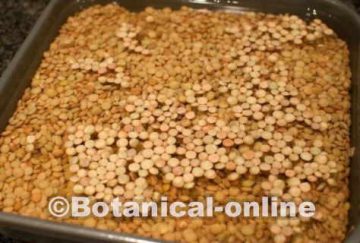
In general, little is said about antinutrients because, as the name implies, they are not nutritious substances and because, supposedly, they do not provide any health benefits or nutritional value in our diet. But antinutrients change the nutritional value of food by decreasing the digestibility of vegetable proteins or capturing minerals, as examples, therefore, it is necessary to know them and learn to properly consume food to eliminate them.
In certain cases, having knowledge of antinutrients is important and useful, even if they are not nutritious substances. Thus, for example, a person with anemia might know that oxalates contained in chard or pigweed capture iron from food and prevent its absorption. Other people will understand why eating too many walnuts makes them feel sick to their stomachs, because they contain these antinutritive substances that make digestion difficult.
On the other hand, in healthy people, these components also do not have a very detrimental effect, since by themselves they do not produce significant nutritional deficits, beyond the symbolic decrease in the absorption of some specific nutrient.
Properties of antinutrients
Antinutrients are substances of a very diverse nature that may have different properties. In general, they have the property of combining with other substances and modifying the absorption of nutrients, for example, by acting as chelators of many minerals.
What effect do antinutrients have?
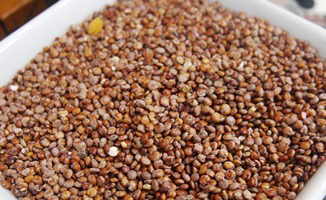
Another example, raw legumes are very rich in trypsin inhibitors, which, as the name implies, interact with trypsin in pancreatic juices and inhibit it. This slows the action of trypsin, which is the digestion of proteins (protease inhibitors). As a result, they slow digestion, produce flatulence and smelly stools (also by the oligosaccharides of legumes).
On other occasions, certain antinutrients can alter our endocrine system, as is the case with hormonal disruptors.
Saponins, present in seeds such as quinoa or soybeans, irritate the gastrointestinal tract in small quantities, which should be taken into account by people with delicate intestines. In high doses, these components are capable of causing the breakdown of blood cells (as occurs in many poisonous plants rich in saponins).
In the long term, exposure to antinutrients could produce nutritional deficits. Fortunately, cooking food eliminates a large part of these substances from food, which minimizes their possible antinutritive effects.
What foods have antinutrients?
Normally, antinutrients are found in the seeds of plants, acting as a defense mechanism for the plant, so that its seed is not digested. Fortunately, it is possible to eliminate antinutrients from food very easily, with techniques such as boiling or soaking.
soaked almonds
Photo of almonds soaked overnight and drained. Long soaking removes many antinutrients from the seeds. So does the roasting of the seeds.
All foods have the same antinutrients?
Foods can have one or several types of antinutrients, but this usually does not pose a nutritional hazard since most can be easily removed from the food during soaking and cooking.
There are many types of antinutrients, some prevent the absorption of vitamins, others decrease the digestibility of proteins, others capture minerals, etc.
It is easy to establish a simple classification of antinutrients. The classification can be:
- Depending on its mechanism of action (enzyme inhibition, or formation of complexes with nutrients)
- Depending on the nature of the substance (alkaloids, saponins, lecithins, etc.)
- Depending on the food in which it is found, this being the most used and popular, although the least reliable, due to the many varieties that exist. For example, soy beans have a large amount of antinutrients, incomparable to another legume such as lentil, with very little antinutrients.
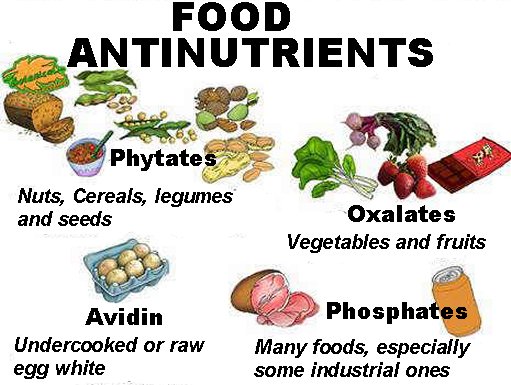
Are there any tables of antinutrient content?
In the food composition tables only macro and micronutrient values (proteins, carbohydrates, iron, calcium, vitamins, …) are considered and these substances are not taken into account. It is also not possible to offer guidance data, since the presence in antinutrients can be very variable depending on the plant variety.
To know how much antinutrients are found in food, comprehensive reports should be consulted analyzing the presence of any of these components in food.
![]() More information on antinutrients
More information on antinutrients


